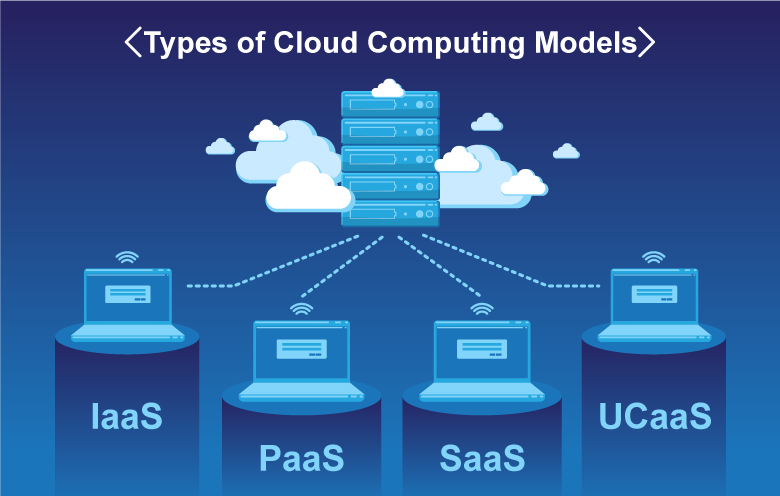LinkDaddy Cloud Services Mastery: Advanced Strategies for Efficient Cloud Services Press Release
LinkDaddy Cloud Services Mastery: Advanced Strategies for Efficient Cloud Services Press Release
Blog Article
Simplify Your Infrastructure With Cloud Provider
As businesses navigate the ever-evolving landscape of innovation and data management, the function of cloud services in simplifying facilities has actually come to be increasingly noticeable. The appeal of structured processes, enhanced efficiency, and boosted source allotment through cloud solutions is obvious. The trip towards an extra agile and cost-effective IT infrastructure entails even more than just migrating to the cloud. It calls for a calculated approach and a deep understanding of the nuances of cloud adoption. Exactly how can organizations successfully navigate this shift and absolutely open the potential of cloud services for streamlining their facilities?
Benefits of Cloud Solutions
Cloud services supply a structured method to handling IT framework, supplying organizations with cost-efficiency, adaptability, and scalability. One of the key benefits of cloud services is the scalability they offer.
In addition, cloud services eliminate the requirement for organizations to purchase expensive equipment and software program. This cost-efficiency is a considerable advantage, especially for small to medium-sized ventures seeking to minimize upfront prices. By utilizing cloud solutions, companies can access high-quality IT sources without the large price connected with conventional facilities configurations.
Furthermore, cloud services offer services with the flexibility to access their information and applications from anywhere with a net connection. This level of accessibility improves partnership amongst teams, allows remote job, and enhances total performance. The flexibility offered by cloud solutions encourages businesses to adapt rapidly to altering market conditions and consumer demands.
Price Savings and Scalability
Along with the operational benefits highlighted earlier, the assimilation of cloud services right into a company's infrastructure generates substantial cost financial savings and improved scalability. Cloud solutions supply a pay-as-you-go design, allowing businesses to range resources up or down based on present requirements, therefore staying clear of the prices connected with keeping excess capacity. This adaptability enables firms to adjust swiftly to varying needs without sustaining unneeded costs.
Moreover, cloud solutions eliminate the requirement for in advance financial investments in equipment and software program, reducing resources expenses. Operating budget are additionally lessened as companies no more need to take care of and keep physical servers, bring about reduced energy usage and IT staffing prices. Furthermore, cloud services provide automatic updates and upkeep, making certain that the framework continues to be secure and up-to-date without calling for hands-on interventions.
Improved Safety And Security Steps
Carrying out rigid safety and security actions is critical when incorporating cloud solutions into a business's infrastructure to guard sensitive data and guarantee conformity with market guidelines. Cloud service carriers supply improved safety and security features such as information security, firewall software security, and multi-factor verification to reduce cybersecurity threats.
Furthermore, routine safety and security audits and compliance evaluations assist recognize susceptabilities and make certain adherence to industry standards. Companies can additionally gain from attributes like automated protection updates and real-time hazard monitoring supplied by cloud provider. By prioritizing safety steps and staying aggressive in attending to prospective risks, businesses can with confidence leverage cloud solutions while securing their useful data from unauthorized accessibility or breaches.
Transitioning to Cloud Infrastructure
To effectively incorporate cloud solutions into a company's framework, an organized technique that deals with the shift in the direction of cloud-based services is vital. Transitioning to shadow framework involves mindful planning and execution to ensure a smooth migration procedure. The initial step is to assess the current infrastructure and determine which applications and systems appropriate for look at here migration to the cloud. This analysis should consider elements such as data sensitivity, compliance demands, and efficiency requirements.
When the analysis is complete, a migration technique need to be established. This method should detail the timeline, resources, and duties for moving each part to the cloud. It is vital to interact this plan plainly to all stakeholders to make certain alignment and decrease disturbances during the transition.
During the migration tracking, testing and process are essential to identify and address any type of concerns immediately. Normal checkpoints ought to be established to track progress and make essential changes. Furthermore, training for employees on making use of cloud solutions must be offered to make certain a successful change and optimize the advantages of the brand-new infrastructure.
Ideal Practices for Cloud Adoption
Effective fostering of cloud services hinges on the strategic alignment of organization objectives with technological abilities and business preparedness. To make sure a smooth change to the cloud, organizations must begin by carrying out an extensive analysis of their present infrastructure and identifying which workloads are best suited for cloud migration. It is critical to include vital stakeholders from different divisions in the decision-making process to gain buy-in and attend to any type of worries early on.
An additional best technique for cloud adoption is to prioritize security and compliance. Organizations needs to meticulously examine the security procedures offered by cloud company and ensure that their information is safeguarded according to industry requirements and regulatory requirements. Carrying out robust data file encryption, access controls, and normal protection audits can aid minimize threats connected with cloud adoption.

Final Thought

As services navigate the ever-evolving landscape of innovation and information management, the duty of cloud services in simplifying framework has actually become progressively prominent - universal cloud Service. Exactly how can companies properly navigate this shift and really open the capacity of cloud services for simplifying their infrastructure?
Cloud services offer a structured approach to managing IT infrastructure, providing companies with scalability, cost-efficiency, and Extra resources versatility. By view website making use of cloud services, companies can access premium IT resources without the significant cost tag associated with traditional framework configurations.
To ensure a smooth transition to the cloud, organizations should begin by performing a thorough analysis of their current facilities and determining which workloads are best suited for cloud movement.
Report this page